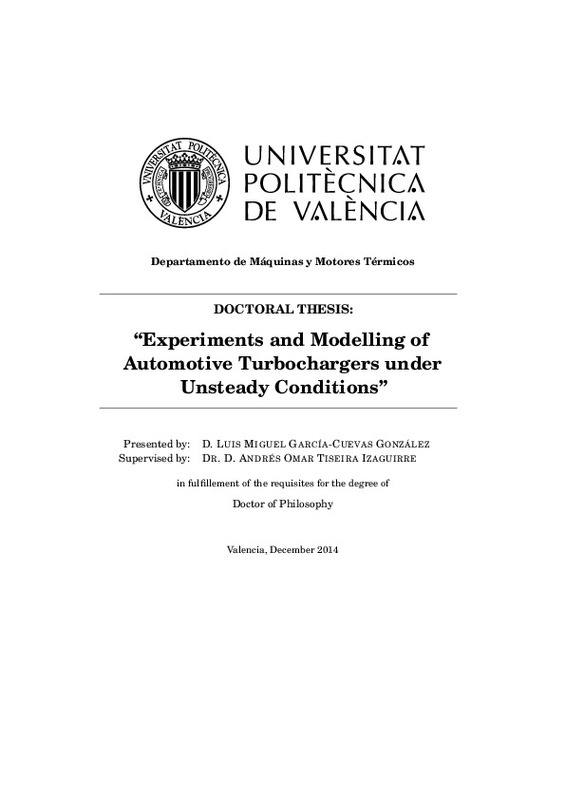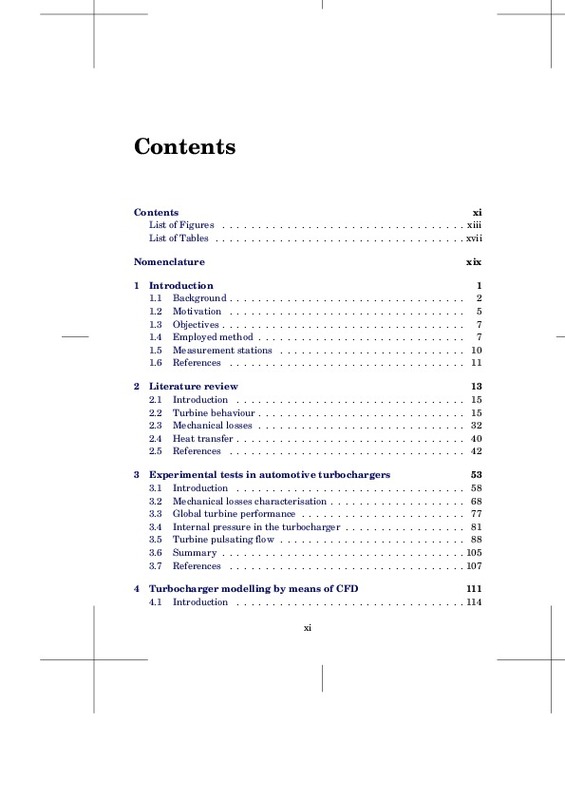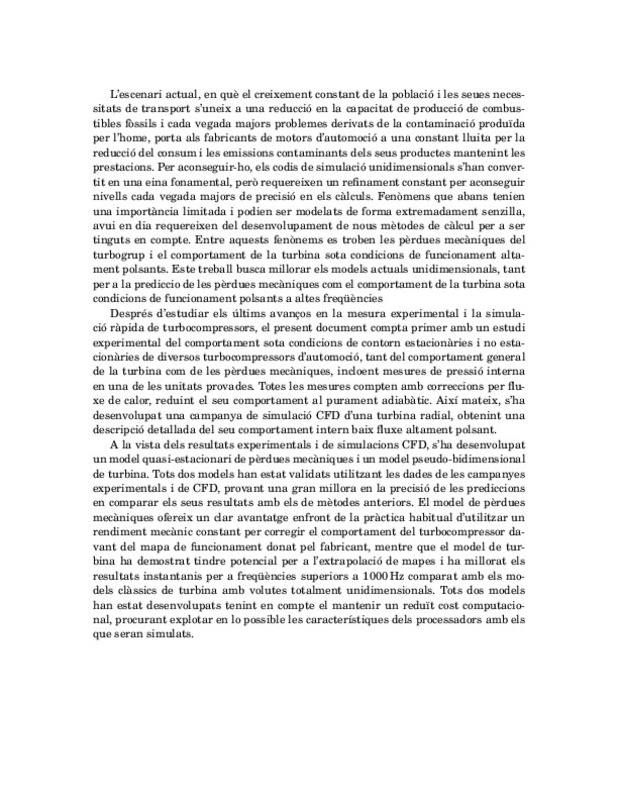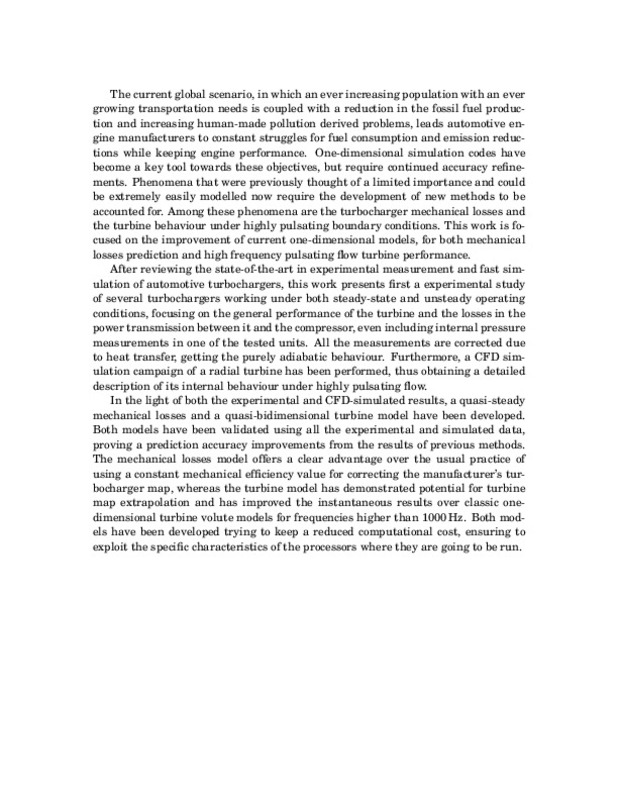|
Resumen:
|
The current global scenario, in which an ever increasing population with an ever
growing transportation needs is coupled with a reduction in the fossil fuel production
and increasing human-made pollution derived problems, ...[+]
The current global scenario, in which an ever increasing population with an ever
growing transportation needs is coupled with a reduction in the fossil fuel production
and increasing human-made pollution derived problems, leads automotive engine
manufacturers to constant struggles for fuel consumption and emission reductions
while keeping engine performance. One-dimensional simulation codes have
become a key tool towards these objectives, but require continued accuracy refinements.
Phenomena that were previously thought of a limited importance and could
be extremely easily modelled now require the development of new methods to be
accounted for. Among these phenomena are the turbocharger mechanical losses and
the turbine behaviour under highly pulsating boundary conditions. This work is focused
on the improvement of current one-dimensional models, for both mechanical
losses prediction and high frequency pulsating flow turbine performance.
After reviewing the state-of-the-art in experimental measurement and fast simulation
of automotive turbochargers, this work presents first a experimental study
of several turbochargers working under both steady-state and unsteady operating
conditions, focusing on the general performance of the turbine and the losses in the
power transmission between it and the compressor, even including internal pressure
measurements in one of the tested units. All the measurements are corrected due
to heat transfer, getting the purely adiabatic behaviour. Furthermore, a CFD simulation
campaign of a radial turbine has been performed, thus obtaining a detailed
description of its internal behaviour under highly pulsating flow.
In the light of both the experimental and CFD-simulated results, a quasi-steady
mechanical losses and a quasi-bidimensional turbine model have been developed.
Both models have been validated using all the experimental and simulated data,
proving a prediction accuracy improvements from the results of previous methods.
The mechanical losses model offers a clear advantage over the usual practice of
using a constant mechanical efficiency value for correcting the manufacturer’s turbocharger
map, whereas the turbine model has demonstrated potential for turbine
map extrapolation and has improved the instantaneous results over classic onedimensional
turbine volute models for frequencies higher than 1000 Hz. Both models
have been developed trying to keep a reduced computational cost, ensuring to
exploit the specific characteristics of the processors where they are going to be run.
[-]
|













